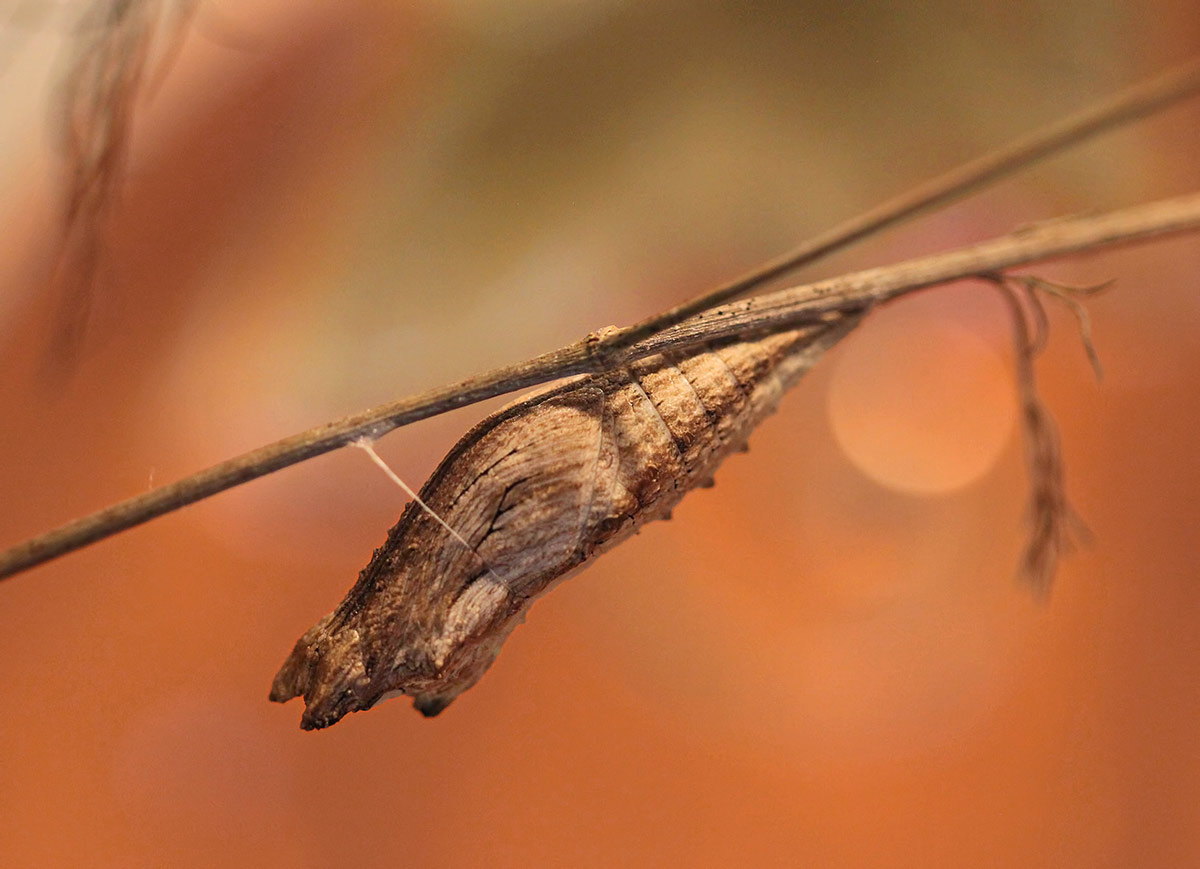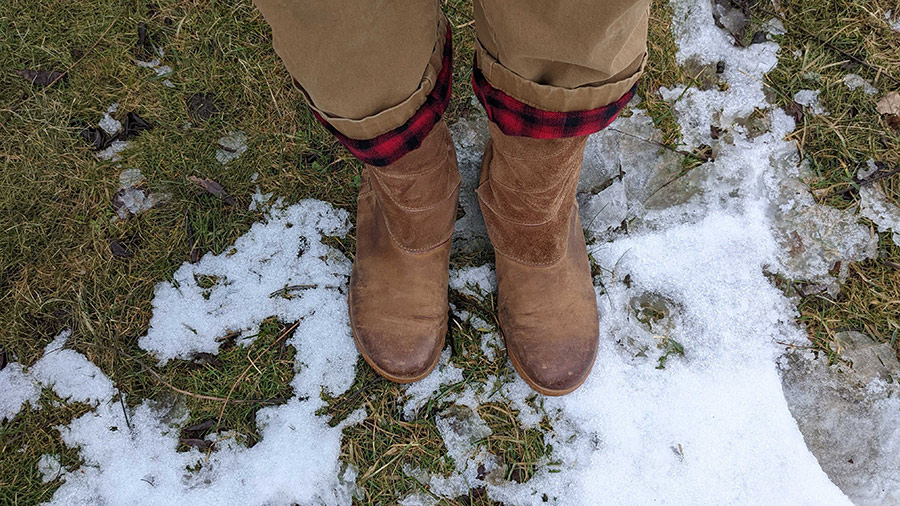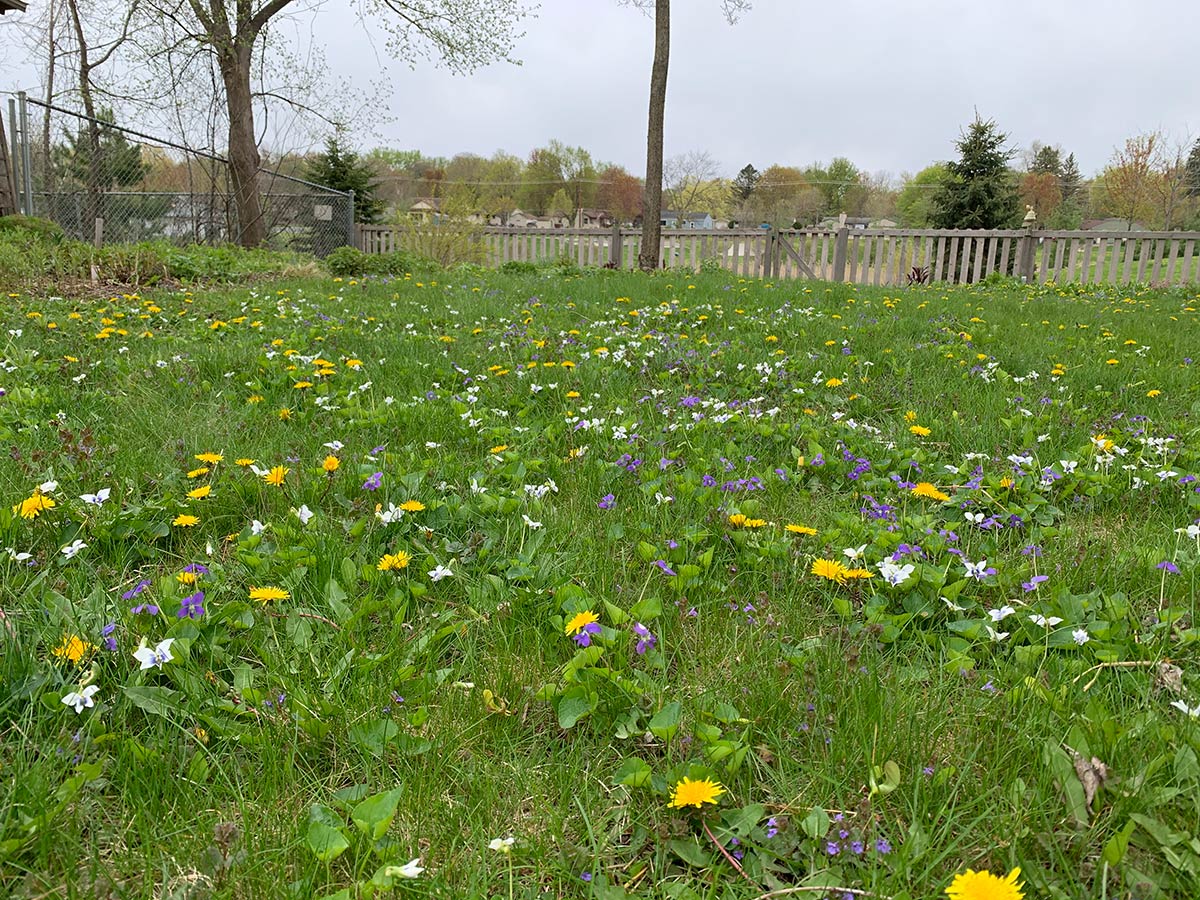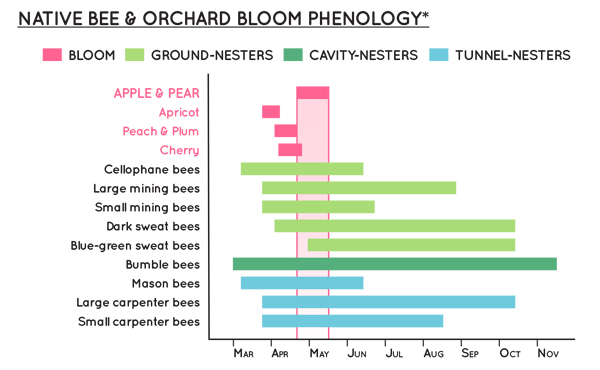A version of this blog was originally published April 4, 2017.
Spring is here. A time when warmer weather naturally turns a winter-weary homeowner’s thoughts towards tackling outdoor chores. The first warm weather of the season may coax us out into the yard, but pollinators in your garden aren’t ready to take a chance on the first warm day.
Chrysalides still cling to last season’s dried standing plant material. While you may begin to see bumble bees and ground-nesting bees emerge as flowering trees and shrubs burst into bloom, they still need cover during chilly nights and heavy spring showers. While mining bees, mason bees, carpenter bees, and bumble bees may be out and about by early April, other species such as sweat bees are still hiding out, waiting for the warmer days that arrive in May. Meanwhile, last year’s leaf litter is still providing protection for both plants and invertebrates against late-season frosts.
So when is the right time to unleash your itchy green thumbs and reach for the rake? Unfortunately there isn’t a hard and fast answer to this question, and the exact date will vary based upon where you are in the country. To offer some guidance, consider asking yourself the following questions.

How to determine when spring cleaning won't bug your pollinators
Have I put away the snow shovel, mittens, and winter coats?
If you haven’t tempted fate yet by relegating the snow shovel to the back of the garage, and if you’re still wearing wool socks and long underwear – it’s too early. Go make some hot chocolate and keep knitting that scarf you’ve been working on all winter.

Would I plant tomatoes now?
Any gardener will tell you it’s not a good idea to plant your tomatoes outdoors until evening temperatures are reliably in the 50s. The tender tomato will shut down and suspend growth and fruiting if subjected to temperatures below 50 degrees or above 90 degrees. If it’s time to plant tomatoes in your area, chances are conditions are neither too hot nor too cold for pollinators to be out and about.
Is the lawn growing tall?
Cool-season lawns begin growing when soil temperatures reach 50 degrees. In all but the warmest climates, if grass is growing enough to justify regular mowing, it’s probably a safe bet that most pollinators have emerged.
To help pollinators the most, wait a little longer to mow. No Mow May is a movement to allow grass and wildflowers in lawns to grow unmown until after May, creating habitat and forage for early season pollinators when floral blooms can be less common. If you do mow before then, consider reducing intensity or frequency.

Have I paid my taxes?
In northern states mid-late April should be the earliest you consider cutting back perennials and clearing garden debris. Keep in mind that some bees don’t emerge until late May, so the longer you can tolerate your “messy” garden the better.
Are apples and pears finished blooming?
Apricot, peach, plum, and cherry trees are the earliest to bloom, coinciding with the emergence of many ground-nesting bees. Apple and pear trees bloom between mid-April and mid-May. If you can manage to wait until apple trees are no longer in bloom, then you should be safely in the clear from disturbing those pollinators that emerge a little later than the rest.

*Timing is generalized for the eastern U.S. and will vary according to your latitude and microclimate.
Resist the temptation of spring fever
We get it, it’s tough to turn a blind eye to the “messy” garden, especially when gardening magazines, catalogs, and TV ads provide temptation daily. Each spring we beg gardeners and homeowners to press pause and find other ways to occupy their weekends.
Instead of disturbing critical habitat, read a book, do a jigsaw puzzle, do your taxes, tidy up the garage, or clean the gutters. While you may be eager to get outside and play in the garden – there will be time enough to toil in the soil before you know it!
Further reading
- Learn about leaving the leaves and other overwintering habitat during fall and winter
- Learn more about how to help Bring Back the Pollinators
- Read about how to reduce pesticides in yards and gardens
- Browse more articles about gardening on our blog




